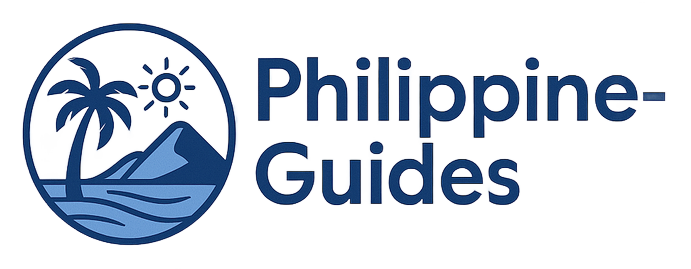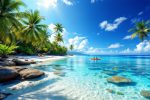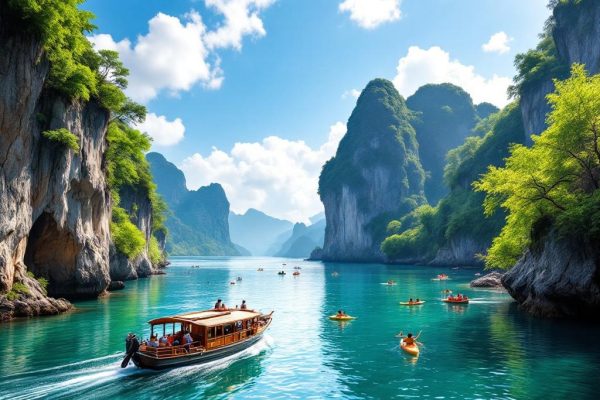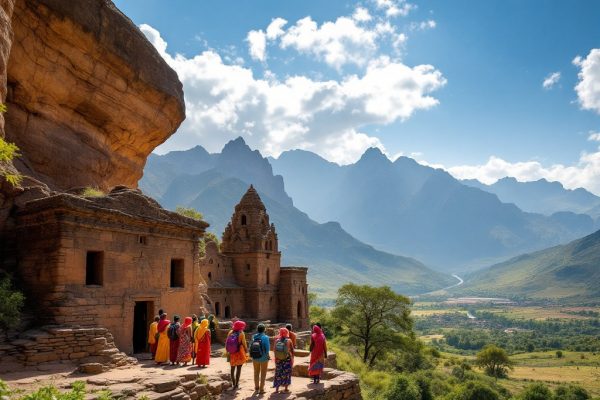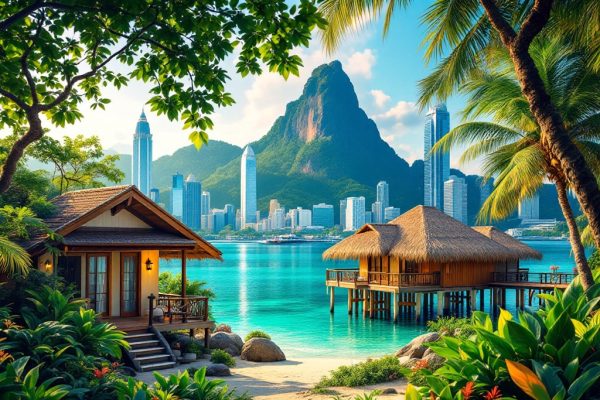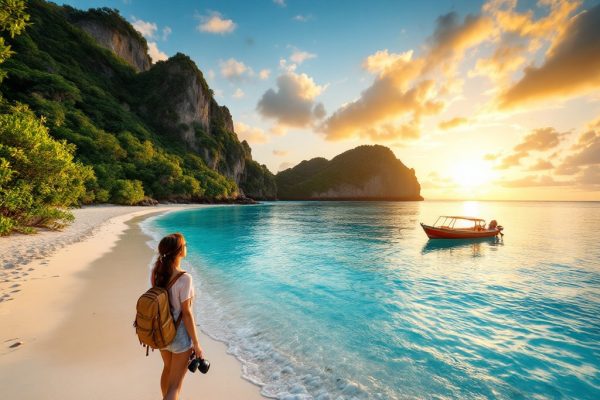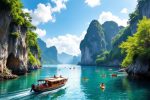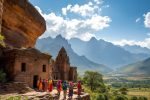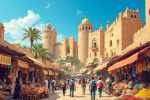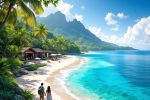Fun Facts about the Philippines: What to Know before Your Trip
Dreaming of pristine beaches, vibrant culture, and thrilling adventures? Discover the Philippines, a Southeast Asian archipelago of over 7,600 islands, offering breathtaking landscapes from volcanic peaks to lush rainforests. Explore bustling cities like Manila and Cebu City, relax on the stunning shores of El Nido and Panglao, or delve into the unique cultural experiences of Mindanao. Learn practical travel tips, safety precautions, and insights into Filipino customs to plan your unforgettable Philippine escape. Start your adventure today!
Important information
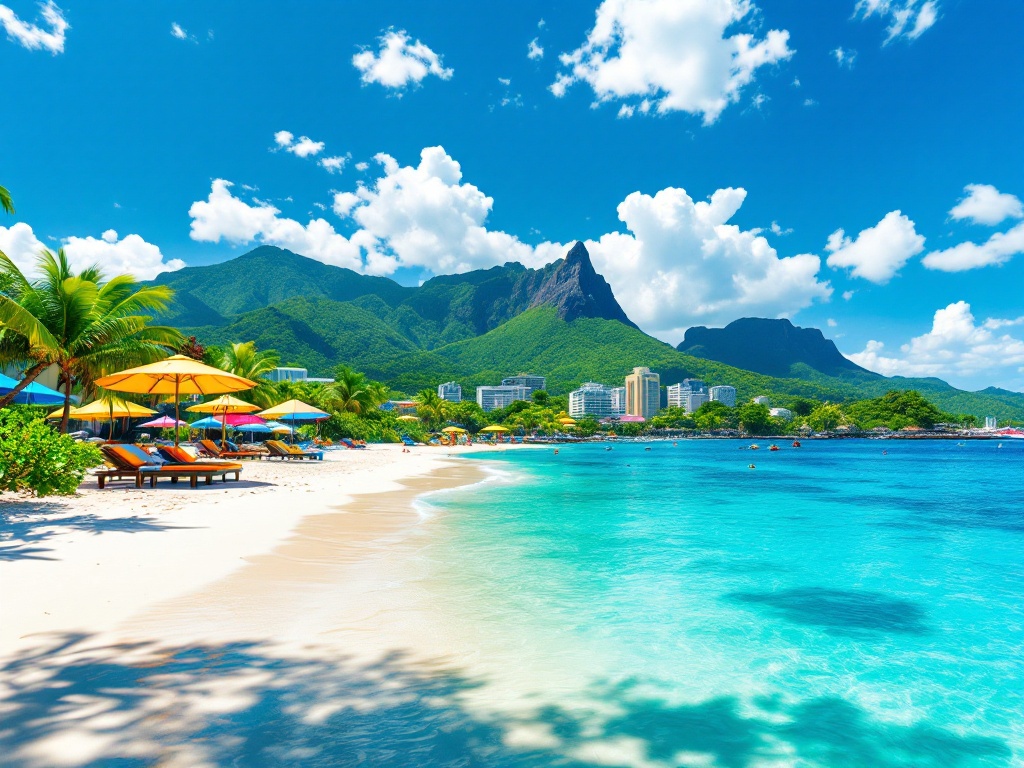
- The Philippines is an archipelago of over 7,600 islands with diverse landscapes, including beaches, volcanoes, and rainforests.
- Filipino and English are the official languages, facilitating communication for travelers.
- The dry season (November to May) is the best time to visit, but be mindful of the wet season (June to October) and its typhoons.
- Cash (Philippine Peso – PHP) is preferred, especially in smaller establishments. Credit cards are accepted in larger businesses within major cities.
- Be aware of common scams. Negotiate fares upfront, verify tour guides, and use authorized money changers.
Introduction to the Philippines
The Philippines, a Southeast Asian archipelago, is comprised of approximately 7,640 islands clustered into three primary regions: Luzon, Visayas, and Mindanao. Nestled between the Pacific Ocean and the South China Sea, this stunning nation is renowned for its breathtaking beaches, abundant volcanoes, and diverse wildlife. It is a truly remarkable destination.
Discover the Archipelago
The Philippines, a Southeast Asian archipelago of roughly 7,641 islands, is nestled between the Pacific Ocean and the South China Sea. While only about 2,000 of these islands are inhabited, the country boasts incredibly diverse landscapes. These include majestic mountains, lush rainforests, pristine beaches, and volcanic peaks. Among its remarkable features are the Chocolate Hills and the breathtaking Banaue Rice Terraces. The Philippines is also renowned for its rich biodiversity.
Main Regions: Luzon, Visayas, and Mindanao
Luzon, the largest island, is home to Manila, the nation’s capital.
The central Visayas islands are renowned for stunning beaches like Boracay and Panglao.
Mindanao, the southernmost major island, offers diverse landscapes and rich cultural experiences.
Understanding Filipino Culture
Filipino culture is a fascinating blend of indigenous traditions, Spanish colonial heritage, and American influences. Known for their warm hospitality, Filipinos deeply value close family ties and vibrant festivals. Catholicism significantly shapes many cultural practices, yet older traditions still resonate strongly. Bayanihan, a core Filipino value, emphasizes community and cooperation, fostering a deep-rooted spirit of mutual support.
Cultural Traits
Filipinos are renowned for their warm hospitality and strong family ties. The concept of “Bayanihan” reflects their deep-rooted spirit of community and mutual support.
Festive Celebrations
Fiestas, vibrant celebrations honoring patron saints, showcase the country’s rich heritage through unique dishes, colorful costumes, traditional dances, music, and art.
Cultural Diversity and Spanish Influence
The Philippines is a melting pot of vibrant cultures, where indigenous traditions seamlessly intertwine with Spanish colonial influences. This fusion is evident in everything from local customs and religious practices to the Filipino language, which is peppered with Spanish loanwords. Many Filipino festivals vividly showcase this unique blend, combining pre-colonial rituals with Catholic beliefs introduced by the Spanish. Some examples are Pahiyas, Ati-Atihan, and Sinulog. Architectural landmarks further tell this story of cultural exchange. Intramuros, Manila’s historic walled city, stands as a testament to this fusion, while Spanish colonial churches dot the landscape, demonstrating a lasting cultural legacy.
Languages Spoken: Filipino and English
The Philippines has two official languages: Filipino and English. Filipino is based on Tagalog, but the archipelago is home to over 175 languages and dialects. Some of the most common include Cebuano, Ilocano, and Hiligaynon. English is widely used in government, education, and commerce, making communication clear and accessible.
Catholicism and Local Customs
Catholicism profoundly influences Filipino culture, shaping traditions and celebrations such as vibrant fiestas and solemn processions. Christmas and Holy Week hold particular significance, blending Catholic beliefs with indigenous practices to create a uniquely rich cultural tapestry.
Filipino Hospitality and Friendliness
Filipino hospitality is renowned worldwide. Visitors are greeted with warm smiles and a friendly “Kamusta?” (How are you?). Respect for elders is paramount, demonstrated through titles like “po” and “opo.” Sharing meals, especially “Kamayan” feasts, strengthens social bonds. “Bayanihan,” the spirit of unity, is fundamental to Filipino culture. These customs create lasting memories for any visitor. Here’s a closer look at some key aspects of Filipino hospitality:
Warm Greetings
Filipinos are known for their warm smiles and genuine interest in others. The common greeting “Kamusta?” (How are you?) is more than just a formality; it’s an expression of care and connection.
Respect for Elders
Respect for elders is deeply ingrained in Filipino culture. Using titles like “po” and “opo” when addressing older individuals is a sign of reverence and good manners.
Shared Meals
Sharing meals is a central part of Filipino social life. The “Kamayan” feast, where food is laid out on banana leaves and eaten with hands, is a particularly cherished tradition that fosters togetherness.
Bayanihan: The Spirit of Unity
“Bayanihan” embodies the Filipino spirit of communal unity and cooperation. It’s the tradition of helping one another, especially in times of need, and reflects the strong social bonds within Filipino communities.
Top Tourist Destinations
Discover the pulsating heart of the Philippines in its vibrant cities! From the bustling streets of Manila and Cebu City to the thriving metropolis of Davao City and the historical charm of Vigan, there’s an urban adventure waiting for you. Seeking stunning beaches? Look no further than Panglao Island, El Nido, or Siargao. Each offers breathtaking beauty and unique experiences. Explore natural marvels like the Chocolate Hills and the Ifugao Rice Terraces, showcasing the country’s rich cultural heritage and fascinating history. Start planning your Philippine adventure today!
Famous Cities: Manila, Cebu City, Davao City, and Vigan
Manila, the Philippine capital, bustles with history and vibrant street life.
Cebu City, equally historic, displays stunning Spanish colonial architecture and a rich cultural heritage.
Davao City, a key economic center on Mindanao, also serves as the gateway to Mount Apo, the nation’s highest peak.
The UNESCO World Heritage site of Vigan offers a captivating glimpse into the past through its preserved Spanish colonial streets.
Must-Visit Beaches: Panglao Island, El Nido, and Siargao
Panglao Island: boasts stunning beaches and diverse marine life, making it a haven for diving and snorkeling enthusiasts.
El Nido, Palawan: presents a contrasting allure with towering limestone cliffs, hidden lagoons, and secluded beaches offering breathtaking views, perfect for kayaking adventures.
Siargao Island: beckons surfers with its powerful waves, including the legendary Cloud 9.
Natural Wonders: Chocolate Hills and Ifugao Rice Terraces
Bohol’s Chocolate Hills are a breathtaking spectacle, featuring over 1,000 symmetrical, grass-covered mounds. These mounds transform into a landscape of giant chocolate kisses during the dry season when the grass turns brown.
Equally impressive are the Ifugao Rice Terraces, a 2,000-year-old UNESCO World Heritage site. Carved into the mountains, these terraces showcase an ingenious irrigation system and the Ifugao people’s deep connection with nature.
Philippine Cuisine and Street Food
Filipino cuisine offers a vibrant blend of indigenous, Spanish, Chinese, and American flavors. From adobo, the national dish of braised meat in vinegar, soy sauce, garlic, and peppercorns, to sinigang, a sour and savory soup, the diversity is captivating. For a culinary adventure, try lechon, a succulent roasted pig.
Savory Delights
Street food offers unique treats like:
- Isaw (grilled chicken intestines),
- Kwek kwek (deep-fried quail eggs),
- Fish balls.
For the adventurous, try balut, a fertilized duck egg delicacy.
Tropical Refreshments
The Philippines’ tropical climate provides an abundance of fresh fruits for refreshing juices, such as:
- Mango,
- Pineapple,
- Calamansi,
- Buko (young coconut).
Coconut flesh is also used in numerous desserts and dishes, adding a distinct tropical sweetness.
Popular Dishes and Street Food Delights
Filipino food offers a delicious culinary adventure. Explore savory dishes like adobo, sinigang, and lechon, each reflecting the rich heritage of Filipino cuisine. Dive into the street food scene for unique flavors, including fish balls and kwek-kwek. Enjoy beloved staples such as pancit (noodles) and lumpia (spring rolls). For a sweet ending, try the refreshing halo-halo.
Fresh Fruit Juices and Coconuts
Filipinos combat the tropical heat with readily available refreshing fruit juices and coconuts. These hydrating drinks offer delicious flavors, such as mango, pineapple, and watermelon. Chilled coconuts, enjoyed straight from the source with a straw, are another popular choice.
Practical Travel Tips
Best Time to Visit
The dry season, from November to May, is the ideal time to visit the Philippines due to its tropical climate. However, the islands remain a compelling destination even during the wet season (June to October), despite the possibility of typhoons.
Currency and Payments
The official currency is the Philippine peso (PHP). Cash is preferred, especially in smaller businesses and local markets. Credit cards are accepted at larger hotels and restaurants, and ATMs are readily available in cities and towns.
Getting Around
Public transportation options include tricycles, jeepneys, and buses. Ride-hailing services like Grab are widely used in urban areas like Manila. Ferries and domestic flights facilitate inter-island travel.
What to Pack
- Mosquito repellent (especially important during the rainy season).
- Bottled water (recommended even if tap water is safe in some areas).
- Sunscreen, a hat, and sunglasses.
When to Visit: Weather and Typhoon Season
The Philippines enjoys a tropical climate, making it a desirable destination. For the best weather, visit during the dry season, spanning November to April. However, be aware that the wet season, from May to October, brings the possibility of typhoons. On average, the country experiences approximately 20 typhoons annually, so plan your trip with this in mind.
Currency and Cash Transactions
In the Philippines, the official currency is the peso (PHP). While credit cards are accepted in larger establishments in major cities, cash is predominantly used, especially in smaller towns and local markets. Carrying smaller denominations is advisable for smoother and more convenient transactions, particularly when dealing with smaller vendors or street markets.
Transportation: Tricycles, Jeepneys, and Ride Apps
Tricycles are the dominant mode of transport in the Philippines.
Jeepneys, colorfully repurposed military jeeps, offer a budget-friendly and iconic travel experience.
Ride-hailing apps like Grab provide another convenient transportation option.
Travel Essentials: Mosquito Repellent and Bottled Water
Safeguard your health during your travels by packing insect repellent to ward off mosquito bites. Instead of tap water, opt for bottled water to avoid potential health issues.
Travel Safety and Precautions
Health and Medical Facilities
For a healthy trip, consult your doctor about necessary vaccinations and medications. Pack essential items like mosquito repellent, sunscreen, and any personal prescriptions. The Philippines offers both public and private hospitals.
Safety Precautions
Prioritize safety by avoiding solitary nighttime walks, especially in unfamiliar locations. Secure your valuables discreetly and save emergency contacts, including local authorities and your embassy or consulate.
Avoiding Scams
Outsmart common scams by being wary of overly friendly strangers and refusing unsolicited offers. Negotiate transportation and service costs upfront, and avoid flashing large amounts of cash. Pre-trip research on common scams in the Philippines is recommended.
Health and Vaccinations
Consult your doctor about necessary vaccinations before traveling to the Philippines. Ensure your routine immunizations are up-to-date. You should also consider vaccinations for typhoid, hepatitis A, and hepatitis B. Depending on your itinerary, a rabies vaccination might also be advisable.
Safety Precautions and Emergency Contacts
In the Philippines, contact the Philippine National Police (PNP) at 117 or your local station for emergencies. For medical emergencies, dial 911. The Bureau of Fire Protection can also be reached at 117. For natural disasters, contact the National Disaster Risk Reduction and Management Council (NDRRMC). Keep your embassy’s contact information readily available.
Emergency Numbers
- Philippine National Police (PNP): 117 or your local station.
- Medical Emergencies: 91
